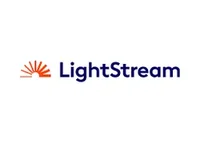Where to find an $80,000 personal loan: Top lenders

Key takeaways
- Getting an $80,000 personal loan requires careful consideration, especially when it comes to your credit history and shopping around for the best rates.
- While it is possible to get a personal loan with bad credit, it is a huge risk as it could result in higher interest rates and potential financial trouble down the road.
- Before signing off, It’s important to understand all the costs associated with an $80,000 loan, including interest rates and applicable fees.
Very few lenders offer personal loans over $50,000, which can make finding an $80,000 loan difficult. While you should always shop rates with at least three lenders, it may not be possible — and that means you should consider alternatives even when you apply.
In addition, an $80,000 personal loan is a large responsibility. Before moving forward, assess your needs, calculate your monthly loan payment and determine how you will keep up with monthly payments.
How to get an $80,000 personal loan
Taking out an $80,000 loan requires more forethought and care than a smaller loan. First and foremost, you must consider your income and how much you can afford. You’ll also need to know your credit profile in detail. The stronger your credit, the more likely you are to qualify and the more competitive rates you will receive.
Your lender will likely require a few common documents and have minimum guidelines you will need to meet. Generally, you will need to prove income through a pay stub, W-2 or tax return. You will also want to calculate your debt-to-income ratio, which compares the amount of debt you have versus your gross monthly income. This gives lenders a better idea of whether you can reasonably afford to repay such a large amount.
When comparing the best personal loans, be sure to pay close attention to loan amount restrictions, as you will be borrowing on the higher end. Most lenders do not offer unsecured personal loans for more than $50,000. Once you crunch the numbers and compare lenders, you can apply for funding.
How to get an $80,000 personal loan with bad credit
If your credit score is in a challenging spot, taking out a personal loan this steep is a very big risk. It will put you in a vulnerable position and could result in future financial problems if you are unable to afford your loan payments.
There are bad credit personal loan lenders that typically cater to those with a low credit score. However, most do not offer loans of $80,000 — in fact, all of the Bankrate-reviewed bad credit lenders have maximum amount limits of $50,000 or less.
Learn more: How to choose the best bad credit loan company
If you have bad credit, you could also add a cosigner or co-borrower to improve your chances of qualifying. This person is equally responsible for the monthly payment, which means their credit score is also at stake. Ensure that you can afford your payments before asking someone to apply for a loan with you.
Where can you get an $80,000 personal loan?
Personal loans of any amount are available from banks, credit unions and online lenders. Each type of lender comes with benefits and drawbacks worth considering. With a loan of this size, it is especially important to compare a number of lenders to ensure you qualify and can receive a competitive APR.
|
APR range |
Loan term |
Minimum credit score |
|
|
Wells Fargo |
6.99%-24.49% | 12–84 months | Not Specified |
|
Alliant |
Starting at 8.99% | 12–60 months | Not Specified |
|
LightStream |
6.99%-25.29%* (with AutoPay) | 24–84 months | 695 |
Banks
Banks offer an experience that is well-suited to a borrower who prefers in-person support. If you already have an account, you may be able to qualify for discounts, although the availability varies from bank to bank.

Wells Fargo
Bankrate's view
Wells Fargo features personal loan options with flexible repayment terms. This is especially true for those who borrow between $3,000 and $100,000, as the repayment period extends to 84 months. Interest rate discounts of 0.25 percent or 0.5 percent are also available to current account holders.

Pros
- Long repayment terms
- Quick funding
- Rate discounts available

Cons
- Only available to current account holders
- Minimal branch locations
- Must prequalify for more loan details
Credit Unions
Credit unions serve as nonprofit financial institutions and typically offer competitive rates for borrowers. Credit unions have an average rate almost one percentage point below bank loans, according to the National Credit Union Administration. While membership tends to be fairly easy to secure, be sure to check if you qualify ahead of applying.

Alliant
Bankrate's view
Alliant is an online-only credit union that offers personal loans to members across the country. It stands out against other lenders for its minimal fees and fast funding. Loan terms are available for up to 60 months and amounts go up to $100,000.

Pros
- Quick funding
- Wide range of loan amounts
- Minimal fees

Cons
- High starting APR
- No joint borrowers
- No prequalification option
Online lenders
Online lenders may be a good fit for you if fast funding is a top priority. Many times, these institutions have funding available within a business day of approval. Remember that online lenders do not have branches, so you will not receive in-person support.

LightStream
Bankrate's view
LightStream offers funding of up to $100,000, a good fit for an $80,000 loan. Plus, the Rate Beat Program allows you to get an interest rate that’s 0.1 percent lower than any interest rate you are approved for on a comparable loan product with another lender. The application process only takes a few minutes, and if approved you may get funds in your account as soon as the same day.

Pros
- Wide range of loan amounts
- Quick funding
- No fees

Cons
- No prequalification
- Long credit history required
- Limited customer service
How much does an $80,000 loan cost?
An $80,000 loan is going to cost quite a bit of money — both as a monthly payment and overall in interest. You’ll pay interest on the amount you borrow, which can vary based on the terms you receive. Even with a lower than average personal loan rate, you will pay tens of thousands of dollars in interest over the life of your loan.
This is how the loan varies on different terms for an $80,000 personal loan with a 12.31% interest rate.
|
48 months |
60 months |
72 months |
84 months |
|
|
Total monthly payment |
$2,119 | $1,792 | $1,577 | $1,426 |
|
Total interest paid |
$21,707.39 | $27,526.81 | $33,539.82 | $39,743.30 |
There are also fees that may apply. Some lenders assess origination fees — which can sometimes total up to 12 percent of the loan amount — prepayment penalties if you choose to pay the loan off early, late payment fees and insufficient funds fees for returned payments. All of these can add to the total cost of an $80,000 loan.
A personal loan calculator can help pinpoint how different interest rates and loan terms affect the cost of the loan. You’ll want to have a firm understanding of the loan and any fees that come with it ahead of signing the agreement.
Alternatives to $80,000 personal loans
If you are unable to find a personal loan that fits your needs, it is best to find alternatives rather than signing off on a loan that could lead to future financial troubles. Consider personal loan alternatives like tapping into your home equity.
- Home equity loan or HELOC: The primary benefit of this borrowing option is the ability to get funding at longer terms than personal loans allow. But it doesn’t come without risk — your home is on the line, and you must have significant equity in your home in order to qualify. A home equity loan is disbursed in a lump sum, while a home equity line of credit (HELOC) allows you to draw multiple times during a set period.
- Cash-out mortgage refinance: A cash-out refinance also requires significant equity in your home. You replace your mortgage with one for more than you owe and get the difference in cash. It is a potentially costly option, and isn’t recommended if you can’t get the same rate or lower than your current mortgage.
- Peer-to-peer lending: Unlike a personal loan where you borrow from a financial insulation, peer-to-peer lending operates as a group of investors that lends money. This can increase your approval odds but also could result in a higher interest rate and fees.
Bottom line
There are many reasons why taking out a personal loan might make sense. Personal loans can help you consolidate debt at a low rate and save a bundle in interest or cover large expenses like home renovations, vacations or weddings.
However, taking out an $80,000 personal loan is costly. It’s vital to understand how much of a loan you need and why you need it before applying. You may find that a lower loan amount covers your needs and is more suitable for your financial situation. Plus, you’ll pay less in interest and fees if you opt for a lower amount.
You may also like

Can I get a personal loan to buy a house?

How to get a $5,000 personal loan: Quick funding options

How to get a $30,000 personal loan

How to get a $35,000 personal loan


